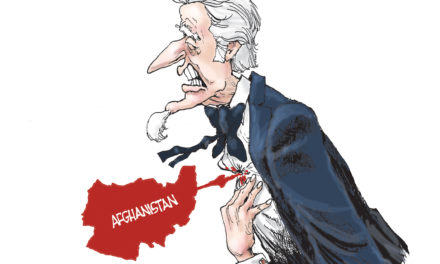Memphians have often called their hometown a city of great neighborhoods.
And yet, for every thriving Cooper-Young, there are neighborhoods clinging to life like New Chicago, Smokey City, and Bearwater.
There is much under way to change this.
Developer Bob Loeb is reviving Overton Square as linchpin for the adjacent Midtown neighborhood; city government is redeveloping the Fairgrounds as a new urban neighborhood and the Pinch Historic District as a neighborhood for St. Jude Children’s Research Center; Memphis and Shelby County’s new Unified Development Code encourages neighborhood redevelopment; University of Memphis’ Graduate Program in City and Regional Planning is helping several neighborhoods, and the newly-created Community LIFT will help neighborhoods help themselves with the goal of creating jobs and economic activity.
No one denies that there is much to be done. Sixteen percent of Memphis houses – about 32,000 – have environmental code violations, including weed overgrowth, commercial dumping, improper storage, yard parking, and inappropriate commercial operations. About 18,000 of them also have cosmetic problems and 14,500 need structural repair.
But rather than intimidating us from tackling these tough problems, they are a wake-up call for all of us to get into the game, said Eric Robertson, president of Community LIFT. His organization will define success one way: the economic development of the neighborhoods. He said economic activity at the neighborhood level is largely nonexistent in Memphis. “I would define economic development in bringing back goods and services to the neighborhood and creating jobs as a result of it,” he said.
“All neighborhoods have some assets to build on – an organization, a church, a school, a historic building, someone who’s doing good work, or a business leader who is championing good,” he said. Then, Community LIFT will bring new resources and experts to work on creating new jobs and improving the neighborhood economy.
“We’ll ask, how do we establish relationships with community organizations, how do we empower people there, how do we help them organize, what’s the vision of the neighborhood for what it wants, and how do we attract new investments by providing incentives for someone to open a business?” said Robertson.
Like everyone working on revitalizing Memphis neighborhoods, Robertson names Cooper-Young as a paragon of what Memphis needs more of. In today’s challenging context, Cooper-Young seems more and more an anomaly, particularly because it continues to thrive. With the opening of the urbane Urban Outfitters, the neighborhood has turned the corner from Cooper onto Central Avenue.
It’s a far cry from the beginnings of the district which began humbly in 1979 when Charlie Ryan, former prison teacher in Atlanta and new co-owner of the Ticket Hub in Memphis, bought a building in the working class neighborhood which was most notably home to Pee Wee’s Diner, a motorcycle salvage business, and sundry businesses.
Over the next four years, Ryan bought more and more buildings, including some on Courthouse steps. A neighborhood like Virginia Highlands and Ansley Park in Atlanta, but it wasn’t until 1988 that Cooper-Young took off. The Business Association formed, the Festival began, a bank located there, and perceptions of the neighborhood began to change.
City government’s crucial contributions was Mayor Dick Hackett’s assignment of promoter extraordinaire Jack Kyle to teach the new business association how to promote the area. There also was a small city grant for street trees, landscape, street lights, and plaza. “What government did was act as a resource,” said Ryan. “Government helped us but never took over. When government gets in and starts doing it itself, that’s when there’s a problem.”
It’s an opinion that was underscored when Cooper-Young businesses were positioned as enemies of bike lanes last year although they had drawn up the first plans for them, he said.
If there’s a lesson to be learned from Cooper-Young, Ryan said it is that a few determined Memphians in sync with their vision and plans “can do anything.” Conversely, absentee owners and the absence of a unifying vision ripped the heart out of Overton Ssquare, he said.
Today, Cooper-Young is home to 16 popular restaurants, and with the new Urban Outfitters, the district appears to be poised for a new era as a retail district as well. “It takes patience to get it right,” said Ryan. “Anything that spoils the vibe is bad. If it helps the vibe, it is good. That’s why sometimes it’s better to leave a building vacant until we get the right tenant.”
It’s a problem that most Memphis neighborhoods would like to have.
This was published in May issue of Memphis magazine.
.





I recall when I first moved to Memphis in 1982, one distinctinve feature was that there were more neighborhood bars than any other city in the US. Not promoting drunken behavior, but it provided a place for music and for people to congregate. That is clearly missing now.
From things I’ve read, I get the hint that the city wants to turn the fairgrounds into something like Mud Island. I don’t know if there are concrete plans but it sure does seem like the city wants to go that route.
A potential Nobel nomination awaits the individual(s) who perfect a repeatable methodology that results in stable, healthy and vibrant neighborhoods.
mtown85: The city’s plans are for a mixed use development. They’ve been presented to City Council with renderings that show a New Urbanist-influenced development with 250,000+ retail, residential, sports venues, a multi-purpose building, hotel, and a new gym for Fairview School.
Urbanut: At least a Nobel Prize nomination. Perhaps beatification.
George~
yep you are correct, in 1980s> there were quite a few neighborhood gathering spots- in fact all over the city and the suburbs, all the way close to Gtown even (e.g. like the lively Dr. Watson’s, or the BBC in overton. Willie Moffats, Cold Storage, Horsefeathers on Mt Moriah, the Half Shell (way before renovation), L&N Cafe, several places on Brookhaven Circle, Frday’s in OSq., the Hyatt (then) on Ridgelake, Houlihan’s, Scruples, CowBoy, Elan (near Clark Tower), Confetti, Patricks, Friends, Smugglers Inn, Bennigan’s on Poplar…and a ton of other gathering places….like the then new neighborhood bar of TJ Mulligan’s (on Quince), and the Bull and Bear down the street on Quince…or strangely a newer place that actually opened in Germantown city limits called Polo (on West St)
but I think that was just the time in history for those kinds of places maybe
but I still think your point has accuracy, but since then (mid 1990s) Memphis became more bifurcated, separated and highly insular…it started on a campaign of pitching Midtown and Downtown against everyone else in the expansive city- and that hasn’t stopped- if anything that sort of deliberately fomented conflict has increased to the detriment of the entire MSA.